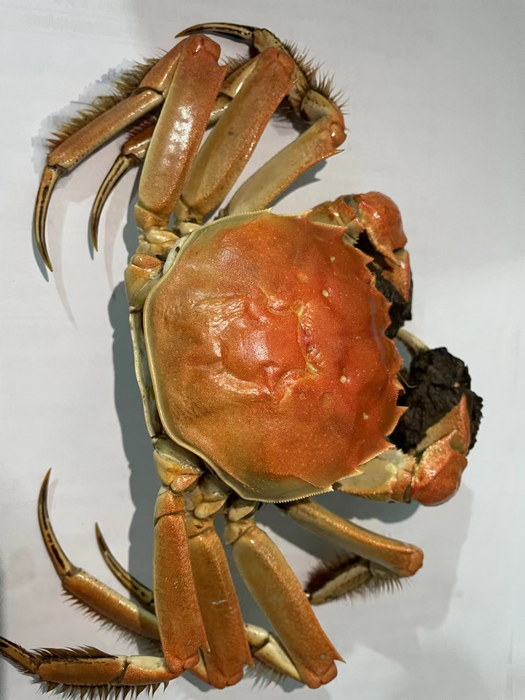Anybody who has ever enjoyed fresh crab legs or lobster tails can attest to how difficult it is to get through their tough shells. But instead of just throwing them away, researchers are “upcycling” these shells into porous, carbon-filled materials with a wide variety of uses. Now, a team reporting in ACS Omega has used this “crab carbon” to create anode materials for sodium-ion batteries — an up-and-coming competitor to lithium-ion chemistries.

Credit: Adapted from ACS Omega, 2023, DOI: 10.1021/acsomega.2c06429
Anybody who has ever enjoyed fresh crab legs or lobster tails can attest to how difficult it is to get through their tough shells. But instead of just throwing them away, researchers are “upcycling” these shells into porous, carbon-filled materials with a wide variety of uses. Now, a team reporting in ACS Omega has used this “crab carbon” to create anode materials for sodium-ion batteries — an up-and-coming competitor to lithium-ion chemistries.
Lithium-ion batteries have become ubiquitous in recent years, powering phones, cars and even toothbrushes. But because the amount of lithium metal in the world is limited, some researchers have turned their attentions to its “chemical cousins” instead. Previously, researchers created a biodegradable zinc-ion battery using the chitin in crab shells. But these wastes could alternatively be turned into “hard carbon,” a material that has been explored as a possible anode for sodium-ion batteries. Though chemically similar to lithium, sodium ions are larger, and thus incompatible with a lithium-ion battery’s anode, which is typically made of graphite. When hard carbon is combined with metallic semiconductor materials, such as the transition metal dichalcogenides (TMDs), the material can become a feasible battery anode. So, Yun Chen, Yue Zhao, Hongbin Liu and Tingli Ma wanted to explore how two different TMDs — tin sulfide and iron sulfide — could be combined with hard carbon made from crab shells to make a viable sodium-ion battery anode.
To make their “crab carbon,” the researchers heated crab shells to temperatures exceeding 1000 F. They then added the carbon to a solution of either tin sulfide (SnS2) or iron sulfide (FeS2), then dried them to form anodes. The porous, fibrous structure of the crab carbon provided a large surface area, which enhanced the material’s conductivity and ability to transport ions efficiently. When tested in a model battery, the team found that both composites had good capacities and could last for at least 200 cycles. The researchers say that this work could provide a route to upcycle other wastes and help develop more sustainable battery technologies.
The authors acknowledge funding from the “Nanotechnology Platform Program” of the Ministry of Education, Culture, Sports, Science and Technology (MEXT), Japan; the National Natural Science Foundation of China; the Taishan Scholars Program of Shandong Province; and the Academic Promotion Program of Shandong First Medical University.
The American Chemical Society (ACS) is a nonprofit organization chartered by the U.S. Congress. ACS’ mission is to advance the broader chemistry enterprise and its practitioners for the benefit of Earth and all its people. The Society is a global leader in promoting excellence in science education and providing access to chemistry-related information and research through its multiple research solutions, peer-reviewed journals, scientific conferences, eBooks and weekly news periodical Chemical & Engineering News. ACS journals are among the most cited, most trusted and most read within the scientific literature; however, ACS itself does not conduct chemical research. As a leader in scientific information solutions, its CAS division partners with global innovators to accelerate breakthroughs by curating, connecting and analyzing the world’s scientific knowledge. ACS’ main offices are in Washington, D.C., and Columbus, Ohio.
To automatically receive news releases from the American Chemical Society, contact [email protected].
Follow us: Twitter | Facebook | LinkedIn | Instagram
Journal
ACS Omega
DOI
10.1021/acsomega.2c06429
Article Title
“Crab Shell-Derived SnS2/C and FeS2/C Carbon Composites as Anodes for High-Performance Sodium-Ion Batteries”
Article Publication Date
28-Feb-2023




